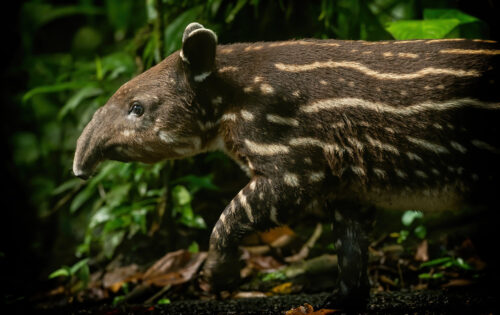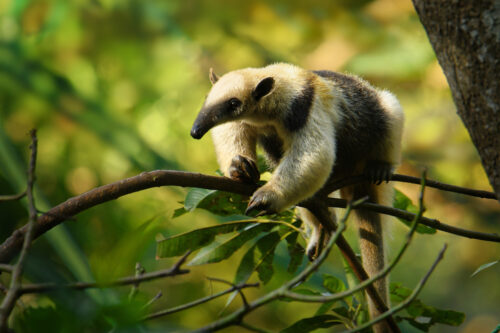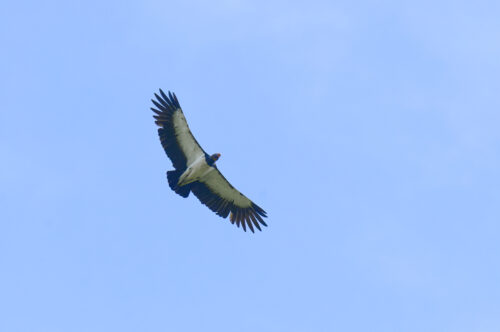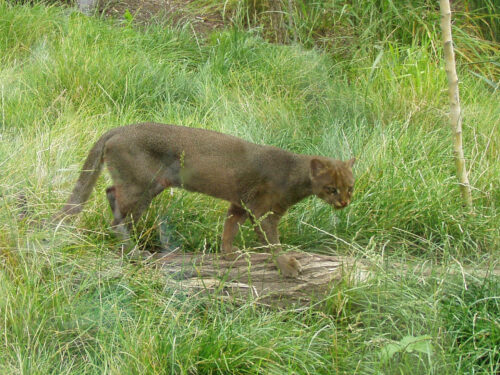5 beautiful animals of Costa Rica

Baird’s Tapir
The Baird’s Tapir is Central America’s largest land mammal growing up to six feet long and four feet tall. Resembling something between a rhino, an elephant and a pig, tapir are herbivores and generally quite shy. They are fantastic swimmers and most active in the morning and at dusk. Globally they are considered an endangered species, but there is a healthy population in Costa Rica. The best place to see tapir is in Corcovado National Park on the Osa Peninsula where there has been a successful conservation project. The area around the La Sirena ranger station is the best spot for sightings, besides that in Braulio Carrillo National Park, and Tenorio Volcano National Park normally you can see this big guy in the forest.

Northern Tamandua (Lesser Anteater)
The Northern Tamandua, also known as the Lesser Anteater, is one of two species of Anteater found in Costa Rica. They are medium sized with a long snout, sharp claws and a prehensile tail. Closely related to the sloth and armadillo, Anteaters don’t have any teeth, just an extremely long tongue which helps them feed on their main diet of termites, ants and bees. When threatened, Anteaters can become very aggressive and are rumored to have killed much larger predators such as Jaguar when attacked. Tamandua are widespread and found mainly in lowland areas. They forage on the forest floor as well as in the trees. They are active both day and night but rarely for more than 8 hours at a time with each individual keeping a different schedule.

Ocelot
Ocelots are a fairly large spotted cat smaller only than the puma and jaguar. They are about double the size of a domestic household cat. Their beautifully spotted fur resembles that of the leopard and in the past this meant they were heavily hunted for the illegal fur trade. Although not endangered in Costa Rica, this cat can be difficult to see as it likes to hide in dense vegetation. Ocelots are mostly nocturnal and therefore difficult to see. They are found all across the country at elevations of less than 1200 meters, in mangroves, swampy forests, rainforest, dry tropical forest and savannah. They have also adapted to human habitats and are sometimes found in villages and small towns.
King Vulture
In Costa Rica there are three types of vulture, the Black Vulture, the Turkey Vulture and the King Vulture. Black and Turkey Vultures are very common and packs of these birds can be seen frequently whilst driving around the country. The King Vulture is the rarest but most eye-catching of the three species. They are mostly white with very brightly coloured heads. As with all vultures, the King Vulture is a scavenger and feeds mostly on carcasses.King Vultures live in tropical lowland forests across Costa Rica.
Jaguarundi
Jaguarundis are native to Central America and most commonly found in Costa Rica. The Jaguarundi is a small, slender and unusual looking wild cat with quite a flat head, round ears and small legs similar to a weasel. Like other wildcats Jaguarundi like dense vegetation and bushy areas. They are excellent climbers but hunt mainly on land near rivers or streams. Unlike other wildcats in Costa Rica, Jaguarundis are mostly active during the day and are constantly on the move. Their prey can range from iguanas, birds and frogs to reptiles, fish, rodents and small mammals. As these cats are active during the day they are more easily spotted than other wildcats. They are widespread in Costa Rica and can be found in many different areas and even at higher altitudes. Sightings have been recorded in Monteverde Reserve, Santa Elena Reserve, Corcovado National Park and many other locations.


